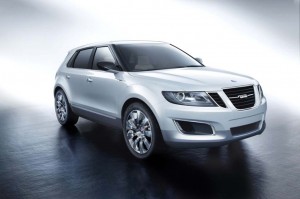A complex deal that would sell Saab assets to a Russian businessman then lease them back to the Swedish company could help save the cash-strapped automaker.
Saab Automobile has been frantically searching for new sources of revenue in recent days as it has burned through much of the funds it raised through a loan from the European Investment Bank, or EIB, last year. The carmaker’s main assembly plant, in Trollhattan, has been shuttered several times because suppliers have refused to deliver much needed parts citing millions of dollars in unpaid bills.
The white knight is Vladimir Antonov, a one-time investor in Spyker Cars, the Dutch-based company that purchased Saab from General Motors in early 2010. Antonov would provide a financial lifeline by purchasing key assets and then leasing them back to Saab. The deal must still be authorized by the Swedish government, which backed Saab’s loan from the EIB.
Antonov was forced out of Spyker by GM, in late 2009. The U.S. maker refused to negotiate with the Dutch company while the oligarch was one of its investors. But Antonov stepped back in, earlier this year, when Spyker sold him its Dutch-based sports car operations.
The Russian also seeks approval to take a stake in Saab itself, offering to invest $71.5 million, though he says he would cap his holdings at no more than 30%.
The purchase of Saab assets is expected to be financed by one of the banks Antonov controls, including Bankas Snoras, in Lithuania.
“The outcome of the discussions is still uncertain and subject to the approval of the Swedish National Debt Office,” acknowledged Spyker, which is based in Zeewolde, The Netherlands.
Saab has been struggling for years, and the new owners got off to a slow start because GM had shut down the Trollhattan plant while negotiating the sale. It took Spyker six weeks to resume production, one reason, it claims, global sales only reached 31,696 in 2010, well under the original target of 50,000 to 60,000.
While volume has been growing in 2011, the numbers still lag behind projections, and Spyker Chairman Victor Muller recently said he does not expect to reach the company’s 80,000 breakeven until sometime in 2012.
The maker is about to launch the second new product line since Spyker stepped in, Saab’s first-ever crossover-utility vehicle, the 9-4X. It also plans to introduce a new version of the 9-3, its highest-volume line, in 2012. That would be critical to meeting forecast sales of 120,000 next year – which would still be short of Saab’s record, the 133,000 vehicles it sold in 2006.

